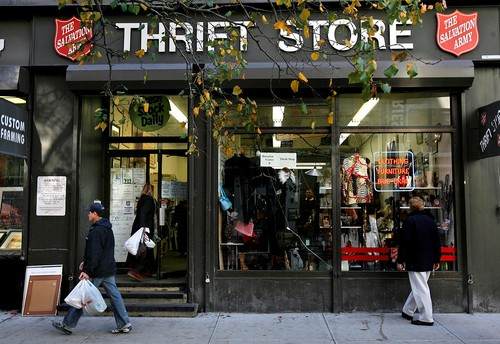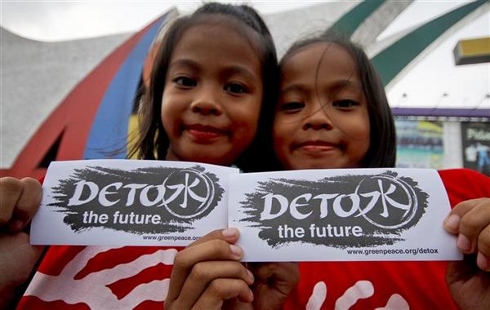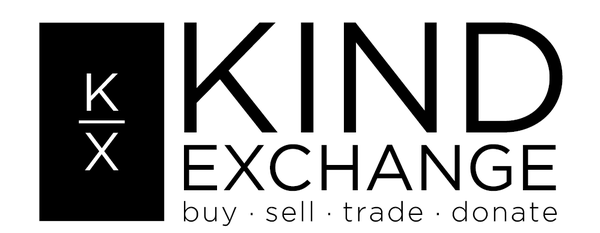
Oversized sweaters are in style – and so is environmentalism.
The thrift shop has grown in popularity in the last decade and is moving beyond its emergence in the 1950s as a place for the poor to get societies hand-me-downs. The industry was originally inspired by the first thrift store, Savers, but has evolved into what we see now. Today the ‘Thrift Shop’ has grown from the larger box consignment giants of Goodwill and the ol’ Sally Anne to a league of small boutique consignment stores specializing in designer, and chic fashion. However overpriced these items may be, there are still good deals, and good ethics to be found when shopping this way.
The benefits of the smaller, more expensive consignment stores is that they cater to a client looking for designer only deals—if this is you, there are plenty out there in the city. The Kind Exchange, and Consign Toronto up by Yonge and Eglington are good choices, but there are more than enough to choose from on the Queen West strip—mostly past Bathurst if that’s your scene.
The growth of the second hand store is not only great for the pocket book, but it is also great for the environment and community development at large. Limiting the consumption of new clothing, cheap or otherwise, reduces the use of cotton, wool, fur, leather, silk, polyester, nylon and other natural/ synthetic materials used in the production of apparel.
Plaid, high wasted jeans, oversized sweater and the general recycling of fashion (no pun intended) has made it easy and enjoyable for young people to add to the wardrobes they love without spending a fortune. The recycling of trends used in the fashion industry makes putting together current looks for old hand-me-downs easier.
This has allowed for the stigma of shopping at second hand stores to be reduced. Everyone can benefit from the low-cost, environmentally sound, practice of second-hand purchasing. Not just for the hipsters of today, but thrift shopping is a great way to keep up without contributing to over consumption and excess that is a staple experience of the Western world, as well as newly emerging economies in the Global South.
As I rang through my latest thrift store purchases, I was speaking with Christine the manager at the Salvation Army located at Shuter and Parliament she commented that, “We see so many young people now, it’s nice!” The change in demographic is hopeful—more and more students and young people are shifting away from spending more money on new, cheaply made products. Thrift stores offer timeless classics, and trendy fashions to suit all tastes—and you can bet if it’s made it to a thrift shop it will stand the test of time.
 The rise of cheap apparel from mass producers like H&M, Walmart, Topshop, Ardenes etc. have created a quick buy-throw away attitude. The clothing is not made well enough in the first place to allow for repairing it to be and option, and it is sold cheap enough to encourage consumers to just buy another in the new pattern or color of the season. These disposable fashion outlets are selling ‘newness’ for the same price that second hand stores are selling quality.
The rise of cheap apparel from mass producers like H&M, Walmart, Topshop, Ardenes etc. have created a quick buy-throw away attitude. The clothing is not made well enough in the first place to allow for repairing it to be and option, and it is sold cheap enough to encourage consumers to just buy another in the new pattern or color of the season. These disposable fashion outlets are selling ‘newness’ for the same price that second hand stores are selling quality.
Thrift shopping is not limited to physical stores—if you’re looking for something specific and want to avoid picking through racks you can opt for online consignment stores. Additionally larger databases like Ebay, Amazon, Kijiji, craigslist or independent vintage websites can be just as advantageous. They do the picking, and you do the buying. Conversely, get your friends together, and throw a clothing swap party it’s a perfect excuse to drink and lower your carbon footprint
REASONS WHY YOU SHOULD THRIFT SHOP:
(1) Human Rights
Worker rights, including labor laws, (working conditions, wages, age requirements, hours worked etc) are not well monitored in areas where apparel is mass-produced. Additionally EPZs (Export Processing Zones) are extremely problematic. Trends such as ‘sweatshop free’ touted by brands such as American Apparel etc have spoken to the movement towards ethically sourced products. However, the ability to source recycled clothing and contribute to your own community has been here all along. In nations where large-scale textile factories are located, the labor laws that protect Canadian workers often do not exist. And even if satisfactory labor laws do exist to protect workers rights in many cases they are not complied with. This can lead to dangerous and unfulfilling working conditions. The disaster of the Bangladeshi textile factory highlights the dangers faced (disproportionately to women) by workers in the garment industry. Additionally, workers in PRC (People’s Republic of China) are barred from forming unions. Unions as we know can be used to protect workers rights and their inability to do so makes working conditions virtually unregulated.
(2) Environmentalism
Water rights issues in developing nations, especially those with garment production as a large proportion of their exports, should be a serious concern. This is due to the pollution of local water sources with dangerous chemicals, including dyes, that can not only damage crop production but also make the residents sick. Textile giants have moved their manufacturing centres out of Western Europe and North America to avoid the levels of regulations both in working conditions and environmental protection, which has built up within the richer nations of the world. The lower standard on environmental laws makes it no problem for producers of dyed fabrics to simply dump toxic chemicals into water sources behind or around their factories. This can be seen across the global south in China, Cambodia, India, Bangladesh—just to name a few. The lack of regulation has dangerous consequences on human and animal health. For more information on this check out this BBC  article on Chinese “Cancer Villages”. Virtually all our cheap and affordable clothing comes from China. Look on the labels in your clothing—I did and found that 80% of my clothing was made in China. Those that didn’t, came from either Bangladesh or India. That being said—I have not bought a new article of clothing in 2 years. So, although the items I’ve purchased from a thrift store have not caused problems by being purchased directly from new production, their initial production was probably produced in less than desirable conditions. A Greenpeace short film called, Detox: Dirty Laundry mentions the irresponsibility of retailers like H & M, or Lacoste in their part in Chinese water pollution, so if that is an issue that interests you, be sure to check it out.
article on Chinese “Cancer Villages”. Virtually all our cheap and affordable clothing comes from China. Look on the labels in your clothing—I did and found that 80% of my clothing was made in China. Those that didn’t, came from either Bangladesh or India. That being said—I have not bought a new article of clothing in 2 years. So, although the items I’ve purchased from a thrift store have not caused problems by being purchased directly from new production, their initial production was probably produced in less than desirable conditions. A Greenpeace short film called, Detox: Dirty Laundry mentions the irresponsibility of retailers like H & M, or Lacoste in their part in Chinese water pollution, so if that is an issue that interests you, be sure to check it out.
(3) Community Development
Thrift stores like Goodwill, or Salvation Army donate proceeds back into community programming. Additionally, these stores provide employment for the local community. These stores do not only hire for their retail spaces but also in their donation processing locations. The money raised from sales goes directly back to the wages and community programming associated with the various organizations. With that being said, the smaller boutique thrift stores do not share the connection with large-scale community development projects, but do still provide quality jobs for people in the area. As an added bonus, Goodwill participates in “greening” the community by taking furniture, appliances etc that would otherwise end up in landfill and selling them.
The more people shop for second hand items—the fewer items will need to be produced by human rights violating companies. The international community is not the only community positively effected the more you spend at Goodwill and Salvation Army. Any money you spend there will go into local community projects and job creation which pays their employees fair Canadian wages. What will happen to those who rely on the textile industry in the developing world? If companies want to compete we should push for products which (a) last longer and (b) are priced in such a way that would allow the companies to pay workers fair wages. However, the goal of environmentalists is to push the idea that clothing must be produced in environmentally sustainable ways. And, when possible, to avoid the production of new products all together.
For more information on how the textile industry effects the environment, click here.


